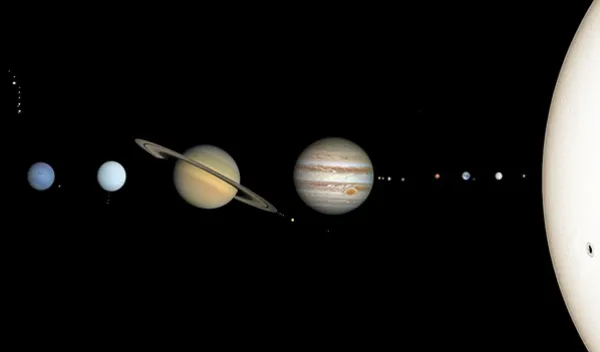
Why does the inner solar system not spin faster?
The motion of a tiny number of charged particles may solve a long-standing mystery about thin gas disks rotating around young stars, according to a new study by Caltech researchers.
These features, called accretion disks, last tens of millions of years and are an early phase of solar system evolution. They contain a small fraction of the mass of the star around which they swirl; imagine a Saturn-like ring as big as the solar system. They are called accretion disks because the gas they contain spirals slowly inward toward the star.
Scientists realized long ago that when this inward spiraling occurs, it should cause the radially inner part of the disk to spin faster, according to the law of the conservation of angular momentum. To understand conservation of angular momentum, think of spinning figure skaters: When their arms are outstretched, they spin slowly, but as they draw their arms in, they spin faster.
However, calculations show that accretion disks have negligible internal friction. The leading current theory is that magnetic fields create what is called a "magnetorotational instability" that generates gas and magnetic turbulence — effectively forming friction that slows down the rotational speed of inward spiraling gas.
Now, physicists Paul Bellan and Yang Zhang have created a computer model of a spinning, super-thin, virtual accretion disk. The simulated disk contained around 40,000 neutral and about 1,000 charged particles that could collide with each other, and the model also factored in the effects of gravity and a magnetic field.
"This model had just the right amount of detail to capture all the essential features," Bellan says, "because it was large enough to behave just like trillions upon trillions of colliding neutral particles, electrons and ions orbiting a star in a magnetic field."
The computer simulation showed collisions between neutral atoms and a much smaller number of charged particles would cause positively charged ions, or cations, to spiral inward toward the center of the disk, while negatively charged particles (electrons) spiral outward toward the edge. Neutral particles, meanwhile, lose angular momentum and, like the positively charged ions, spiral inward to the center.
Bellan and Yang's paper reporting the results was published in The Astrophysical Journal. Funding for the research is from the U.S. National Science Foundation.
"This study answers a difficult question about how disks develop, evolve and form jets," says Lisa Winter, a program director in NSF's Division of Atmospheric and Geospace Sciences. "This process happens all over the universe, from the formation of solar systems to supermassive black holes at the centers of galaxies."
